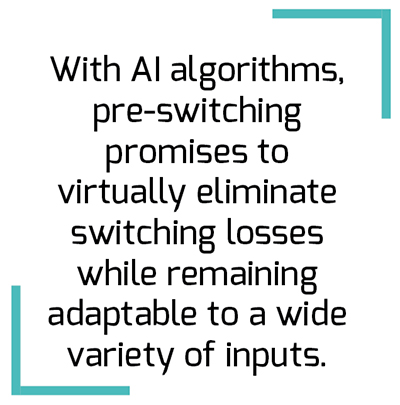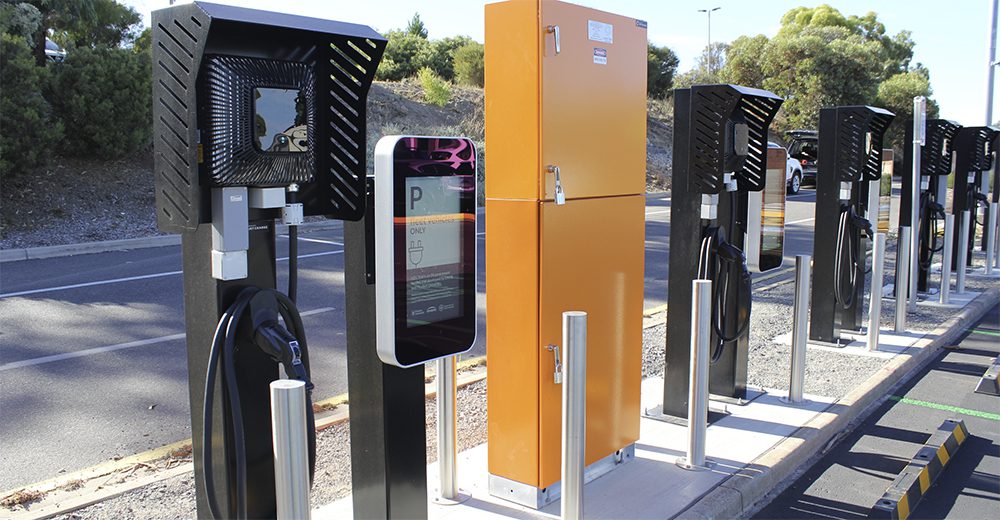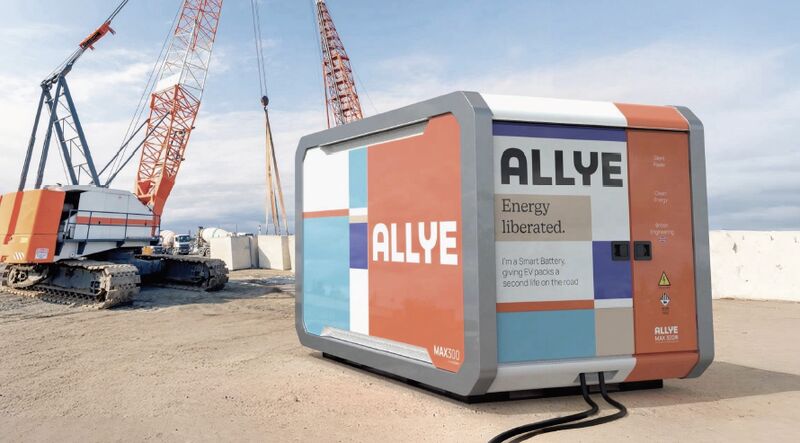How would you like it if your EV could go ten percent farther with the same size battery? You’d love it, of course, and so would every EV manufacturer out there. Range is one of the most important parameters in the EV industry, as many potential EV drivers are apprehensive about lower range ratings.
Manufacturers can always add more battery capacity to increase range, but that adds weight and, more importantly, increases cost. A better solution would involve fixing inefficiencies in the EV powertrain, which would result in more bang for your battery buck.
Bruce Renouard, CEO of power electronics start-up Pre-Switch, can attest to that. His company has developed a method to dramatically improve the efficiency of power converters, a crucial element in the EV powertrain. Power converters usually lose a lot of energy as heat – Pre-Switch cites an estimate that 20 percent of the planet’s electrical power is wasted in power converters. Though power converters are used in all sorts of electronics and electrical equipment, EVs are positioned to be one of the biggest beneficiaries of Pre-Switch’s technology.
“The EV guys, they’ve got a big problem,” said Renouard. “They’ve got this big, heavy battery they’ve got to carry around. Anything that makes that system more efficient is paramount to them.”
The switching problem
Power converters take in one form of electricity and convert it from AC to DC or vice versa, change the voltage or frequency, or some combination of these. When the change is from DC to AC, as is needed between an EV’s battery and its motor, the converter is called an inverter.
Most convertors suffer from a problem called switching loss. To convert from DC to AC, an invertor uses switches – transistors – that turn on and off frequently. However, every time a switch opens or closes, some power is dissipated as heat. This results in lost energy that can no longer be used for driving an electric motor.
A solution to switching losses exists, and it’s called soft-switching. Compared to the most straightforward method of building inverters (called hard-switching), soft-switching uses an auxiliary circuit to control the timing of the switches in such a way as to eliminate power losses. However, soft-switching techniques are difficult to implement, and typically work within a limited range of power inputs and outputs. Thus, soft-switching hasn’t proven effective in real-world applications like EVs.

Now, Renouard’s company has looked at the soft-switching technique and reworked it to come up with a new solution: pre-switching. Using an auxiliary circuit along with artificial intelligence (AI) algorithms, pre-switching promises to virtually eliminate switching losses while remaining adaptable to a wide variety of inputs.

Pre-switching
Pre-Switch is a solution that augments an existing inverter with a few additions: some passive components, an active switch, and an integrated circuit that Pre-Switch calls the Pre-Flex IC. This IC contains Pre-Switch’s AI algorithms, which are implemented on a field programmable gate array (FPGA). The IC monitors information about the inverter and uses it to control the timing of its switches.
“We listen to about twenty different parts of the system,” explained Renouard. “We do a very fast analog to digital conversion, and then we pump that digital information into our algorithm.” The algorithm’s output is simple: it controls the timing of the auxiliary resonant switches and the main working switches for each phase leg. Adjustments are made on a cycle-by-cycle basis.

When a switch turns from on to off, it changes from having a low voltage and high current to having no current and high voltage (and vice versa when the switch turns on). In hard-switching, there’s always a brief overlap in voltage and current waveforms that occurs when one is rising and the other falling. This overlap is the cause of switching losses. With its AI algorithms, Pre-Switch offsets the voltage and current transitions to eliminate the overlap, and thus eliminate the switching losses. By adjusting the timing of the auxiliary resonant switches in this manner, Pre-Switch’s solution eliminates up to 95 percent of all switching losses.
Though originally designed for insulated-gate bipolar transistors (IGBTs), Pre-Switch can be implemented no matter the underlying switch technology. “We’re device-agnostic,” Renouard said. “We have a different algorithm for silicon carbide and a different algorithm for IGBTs.”

Improving motor efficiency
By reducing switching losses as drastically as it does, Pre-Switch enables inverters to operate at a higher switching frequency. With hard-switching, the more often you switch, the more power you lose to switching losses. But with that concern eliminated, pre-switched inverters can operate 5-20 times faster, depending on the inverter switch type.
Faster inverter switching speeds have two main benefits. The first is that faster speeds allow a reduction in the size of DC link capacitors, which are expensive and heavy parts of an EV powertrain inverter. Though they’re still necessary, they can be much smaller, which saves space, weight, and about $50 to $100. The second benefit is that higher switching speeds produce cleaner AC outputs. The faster the switching, the closer the output wave is to a pure sine wave.

“Nothing’s more efficient than a pure sine wave,” Renouard said. “But to develop the pure sine wave is very expensive. You can do it today, but it requires huge output filters that are heavy and very expensive. With our way, by switching very fast, we can now make the output so clean that you don’t really need an output filter, and if you do, it will be very small and low-cost.”
The technology behind Pre-Switch began its life in the hands of an audiophile robotics engineer who was trying to build a high-quality audio amplifier. To produce the best sound, you need quick switching, and the engineer soon found he was limited by the familiar problem of switching loss. Lacking the domain knowledge of soft-switching, he began tackling it from an outsider perspective. That’s how, decades after soft-switching was determined to be impractical for real-world applications, it made an unexpected comeback.
“[Soft-switching] was the Holy Grail for power electronics,” Renouard reflected. “But by the late 1990s people had given up on it because they couldn’t control it. And it wasn’t until we came along that we controlled it. People are really flabbergasted that we’ve resurrected what’s considered old technology.”
The company of the robotics engineer who initially developed the technology sold it to Renouard, who started Pre-Switch with the engineer as CTO. The company has been developing the technology and building products ever since. In total, about five million dollars and six years of development effort have been invested in developing Pre-Switch technology.
That effort is starting to pay off, as last year Pre-Switch closed a deal with an unnamed Tier 1 automotive manufacturer for one of its EV programs. Over the summer, that manufacturer will test Pre-Switch in one of its EVs to validate its performance. It will be the first field test of the technology in an EV, though it has undergone weeks of reliability testing in Pre-Switch’s lab. A successful field test, of which Renouard is confident, will see the mystery manufacturer implement Pre-Switch across its EV lineup, and possibly even invest in the startup.

A hundred years of EV innovation
In Renouard’s mind, Pre-Switch is a significant advance in power converter technology, one which stands to increase the efficiency and range of EVs today. But Pre-Switch is one company working on one type of inefficiency – as EVs grow into maturity, Renouard is confident that many efficiency improvements will follow Pre-Switch’s lead.
“For a hundred years people have been working on improving the efficiencies of the internal combustion engine. We’re just now starting this EV revolution. There are going to be a whole lot of ways we can get more efficiency out of this system, and Pre-Switch is going to be just one of many ways,” he predicted.
This article appeared in Charged Issue 44 – July/August 2019 – Subscribe now.





































































































